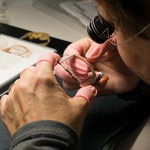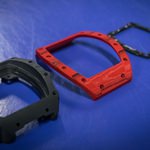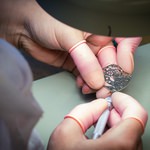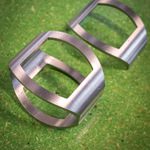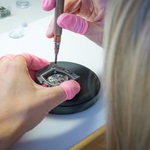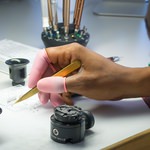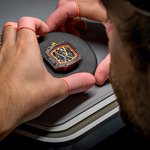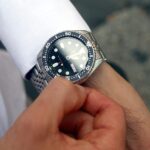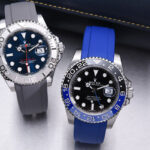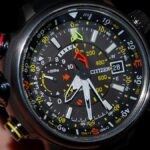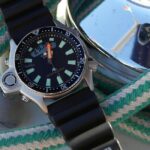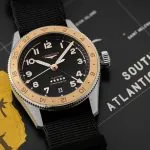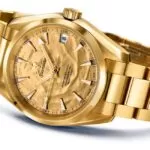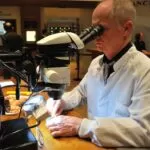Twenty years ago Richard Mille was a young brand in the world of haute horlogerie, but today it is his most authoritative representative in the hyper-watch sector and the only brand that was able to put together technology and performance that are worthy of the aerospace industry and the chronograph-ultralight-hands-on-photos-price/" target="_blank" rel="noopener">Formula 1 world with historical complications. The main objective is that of guaranteeing an exceptional performance in exceptional conditions, like races on tracks, rallies, polo matches, tennis matches, and even high jump games.
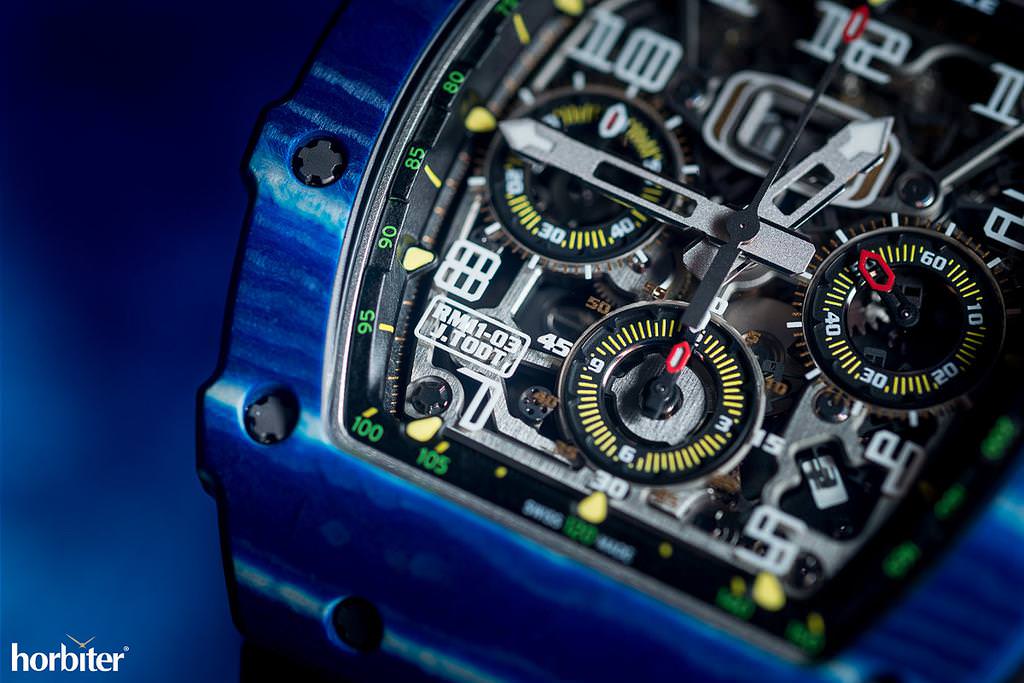 Richard Mille is the only brand to guarantee a full performance; so a trip to the place where its watches are designed and crafted is essential to properly understand how this mission is achieved.
Richard Mille is the only brand to guarantee a full performance; so a trip to the place where its watches are designed and crafted is essential to properly understand how this mission is achieved.
Travelling towards La Chaux de Fonds
The journey into the universe of the Richard Mille products officially takes place once a year (on occasion of the SIHH and, for the last time, in 2019) and, as far as the Italian market is concerned, also when some events are being organized by the Via della Spiga boutique in Milan. Visiting the manufacture and the various laboratories, where cases, movements and watches are being assembled is a rare opportunity to fully understand how watches that do not follow the rules of the most traditional haute horlogerie sector are being crafted.
A successful industrial story – Valgine and Pro Art (and Audemars Piguet Renaud’s and Papi’s participation)
If you are a follower of the Grand Prix you will have probably seen a Richard Mille wrapped around the wrists of Fernando Alonso, Charles Leclerc, Romain Grosjean, or Jean Todt, but how are watches that withstand exceptional accelerations, feature indestructible glasses and are capable of performances that no competitor is even remotely able to approach, being designed?
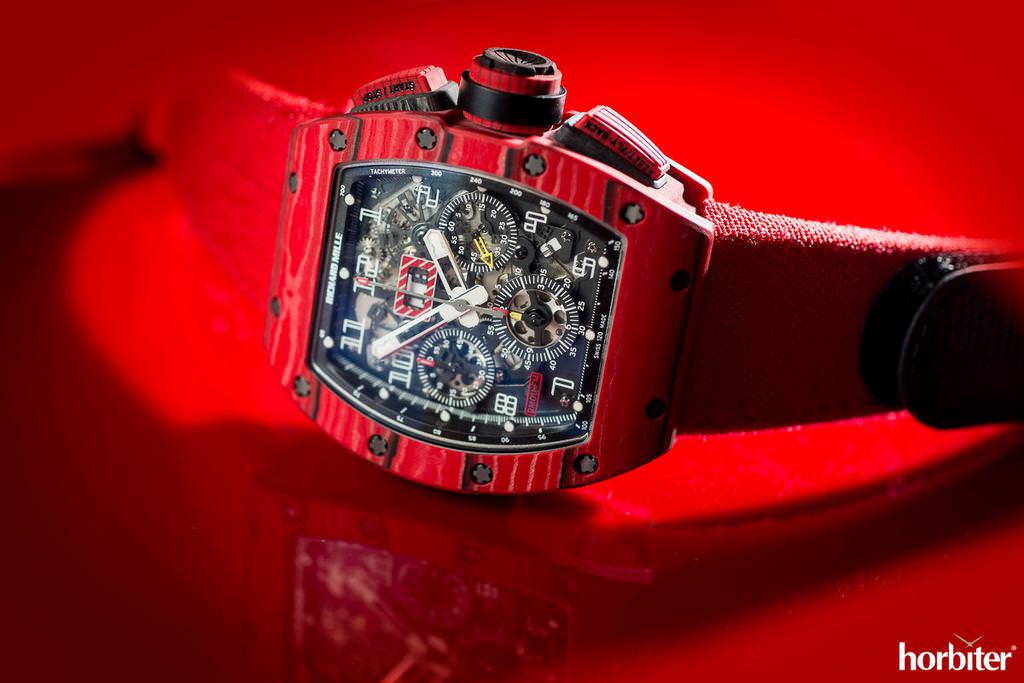 There are two industrial laboratories within the brand’s center located in Les Breuleux (1,520 inhabitants in the Jura Canton) where highly specialized staff follows all the designing, development and manufacturing activities – Valgine and Pro Art. Valgine was originally founded at the beginning of the 20th century by the Guenat family and is today completely integrated into Richard Mille for which it assembles movements.
There are two industrial laboratories within the brand’s center located in Les Breuleux (1,520 inhabitants in the Jura Canton) where highly specialized staff follows all the designing, development and manufacturing activities – Valgine and Pro Art. Valgine was originally founded at the beginning of the 20th century by the Guenat family and is today completely integrated into Richard Mille for which it assembles movements.
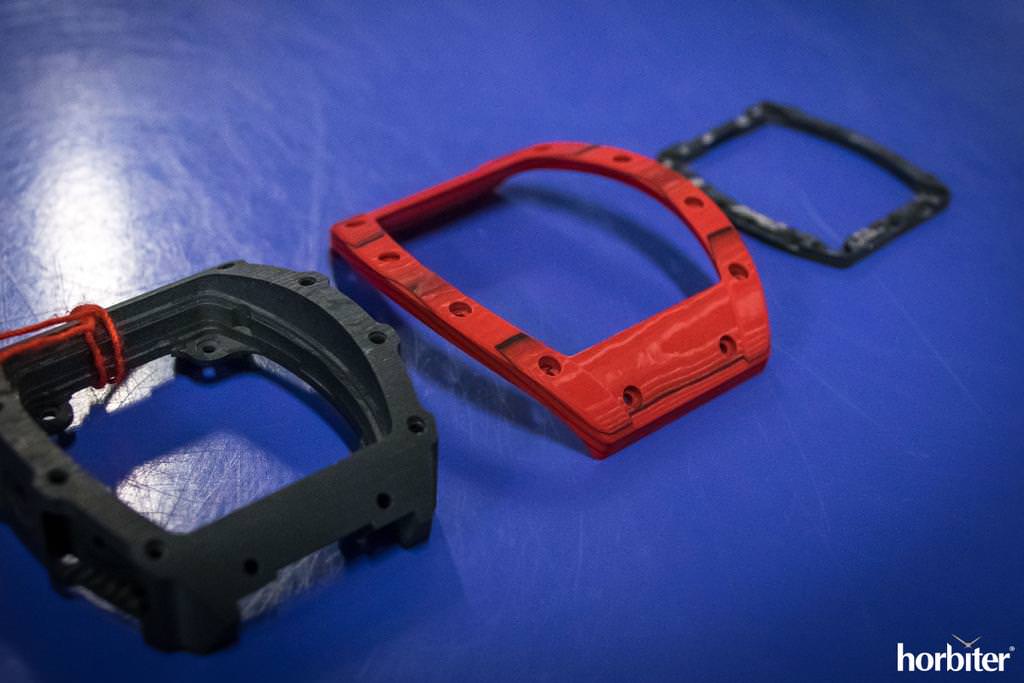 Pro Art was built five years ago to manufacture cases and bracelets, but these are not the only two laboratories of this brand. The technical structure of Richard Mille also involves Audemars Piguet Renaud and Papi that can boast a great expertise in the crafting of ultra-complicated calibers, and that also manufactures tourbillons and double chronographs exclusively for Richard Mille. Valgine has ancient origins – it crafted refined movements for pocket watches already at the beginning of last century, and it then turned to the crafting of wristwatches in the 20s and 30s to supply well-known brands like Longines for example.
Pro Art was built five years ago to manufacture cases and bracelets, but these are not the only two laboratories of this brand. The technical structure of Richard Mille also involves Audemars Piguet Renaud and Papi that can boast a great expertise in the crafting of ultra-complicated calibers, and that also manufactures tourbillons and double chronographs exclusively for Richard Mille. Valgine has ancient origins – it crafted refined movements for pocket watches already at the beginning of last century, and it then turned to the crafting of wristwatches in the 20s and 30s to supply well-known brands like Longines for example.
Pro Art – where Richard Mille’s famous tonneau case was first created
Trips to manufacturing facilities always follow a reverse path if compared to what you would expect – you start from the manufacturin process and then move upstream towards the development process, and our trip to Richard Mille’s was no difference.
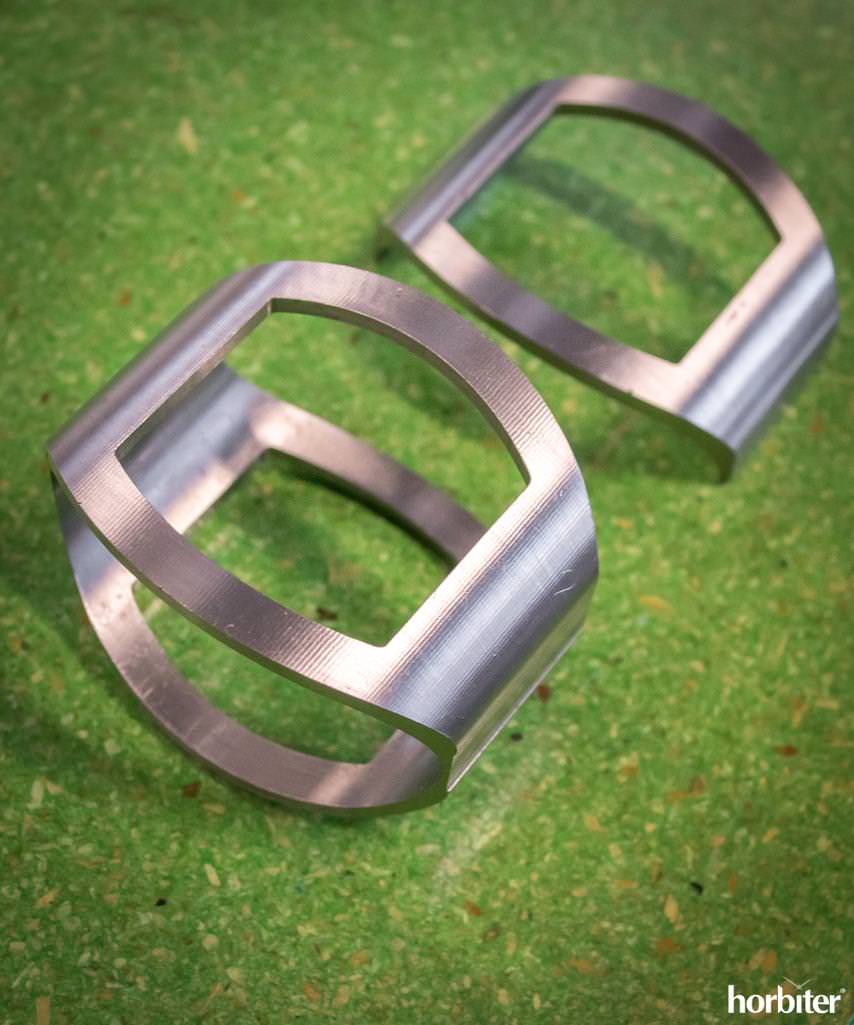 Pro Art is the company designed to build cases and bracelets, like the titanium case that you can see in these pics that is crafted starting from an 80–cm–long–titanium–bar and that is only the first step in a long process that will transform a first mold into its final form. Since titanium is easily ignited when processed, oil jets with a temperature ranging between 23°C and 25°C continuously cool down the bar throughout the CNC-process, and the machining process is constantly supervised by the staff, even during the weekend.
Pro Art is the company designed to build cases and bracelets, like the titanium case that you can see in these pics that is crafted starting from an 80–cm–long–titanium–bar and that is only the first step in a long process that will transform a first mold into its final form. Since titanium is easily ignited when processed, oil jets with a temperature ranging between 23°C and 25°C continuously cool down the bar throughout the CNC-process, and the machining process is constantly supervised by the staff, even during the weekend.
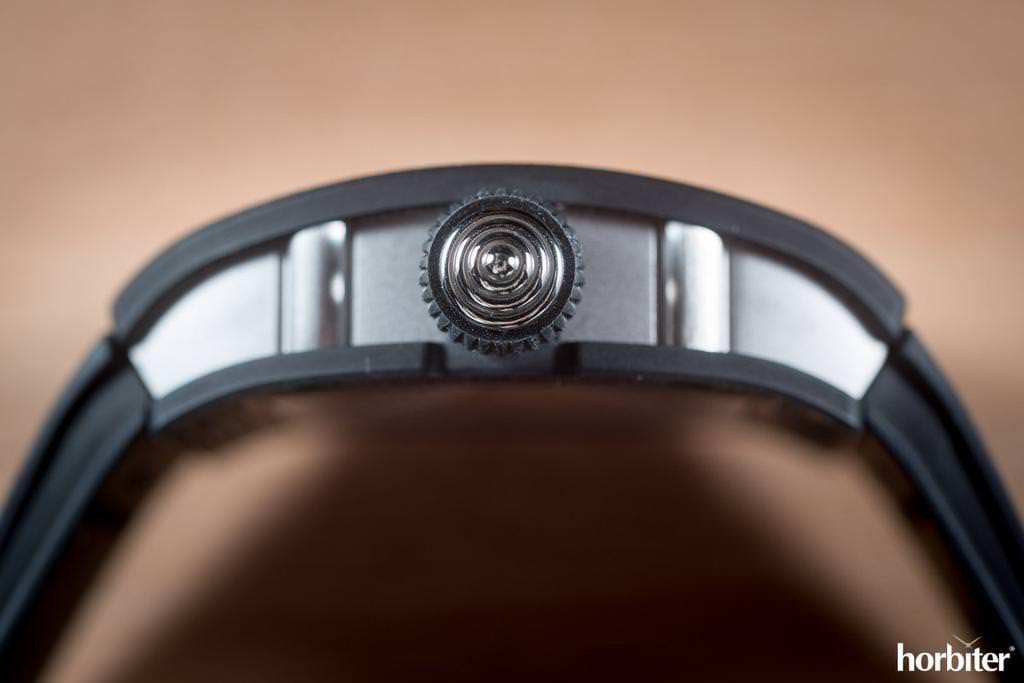 This is a characteristic that confirms the family nature of this company and the strong link between the territory and its people that is one of the cornerstones of the brand's success. Beyond pure and uninteresting figures that include microns and other technical details I think it is more important to emphasize that a Richard Mille watch is not a Swiss Made timepiece in the common sense of the word (a term that is often clichéd, been emptied of its original meaning as some larger groups have unfortunately accustomed us to), but it is 99.6% Swiss Made instead. The remaining 0.4% (the crown and, in some cases, the chrono buttons too) comes from nearby suppliers located on the French border. This is the measure of the authentic Swiss Made and of what we could define as a "zero km" watch-making factory.
This is a characteristic that confirms the family nature of this company and the strong link between the territory and its people that is one of the cornerstones of the brand's success. Beyond pure and uninteresting figures that include microns and other technical details I think it is more important to emphasize that a Richard Mille watch is not a Swiss Made timepiece in the common sense of the word (a term that is often clichéd, been emptied of its original meaning as some larger groups have unfortunately accustomed us to), but it is 99.6% Swiss Made instead. The remaining 0.4% (the crown and, in some cases, the chrono buttons too) comes from nearby suppliers located on the French border. This is the measure of the authentic Swiss Made and of what we could define as a "zero km" watch-making factory.
The obsessive search for quality
The crafting process aims to achieve extremely rigorous machining tolerances. The rigor goes all the way to the end-customer delivery process because every new customer that, for example, picks up his metal-made Richard Mille RM will immediately find out that a thin blue paint layer has been gently applied on to the rounded and polished edges of the case to protect those specific parts from scratches and bumps and the layer will only be removed once the watch has been finally delivered to its new owner. The cases crafted in NTPT® or in Quartz TPT® instead follow a completely different and dedicated process.
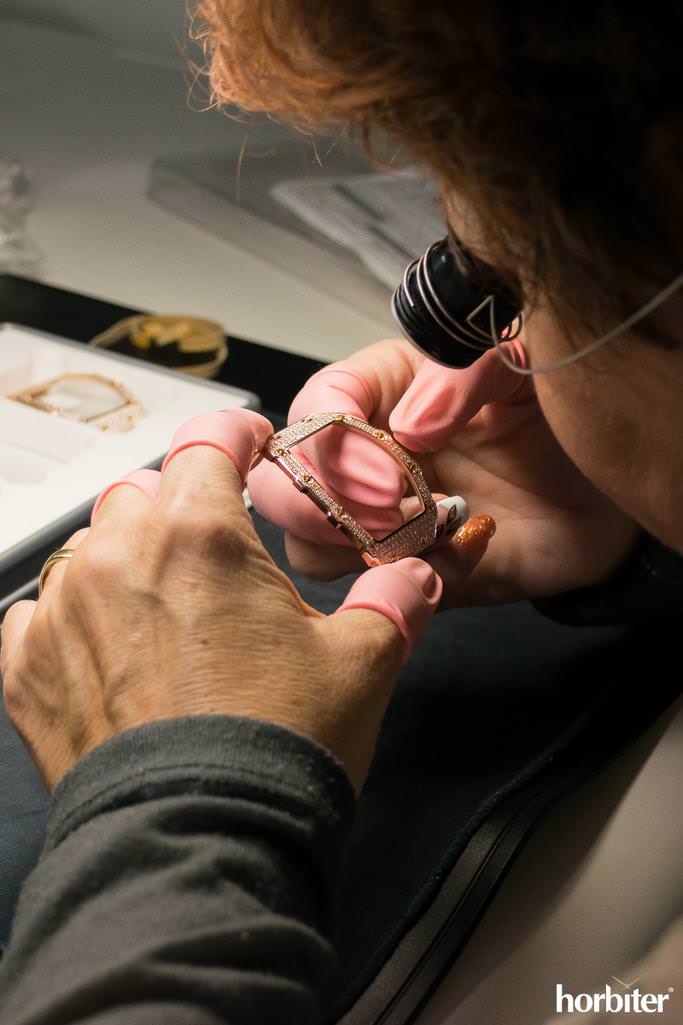 Moreover, if you look at the complexity of an RM case, you should know that the number and variety of CNC machines used to craft the hollows and the grooves all the way up to its final geometry are countless and they involve investments for several million euros.
Moreover, if you look at the complexity of an RM case, you should know that the number and variety of CNC machines used to craft the hollows and the grooves all the way up to its final geometry are countless and they involve investments for several million euros.
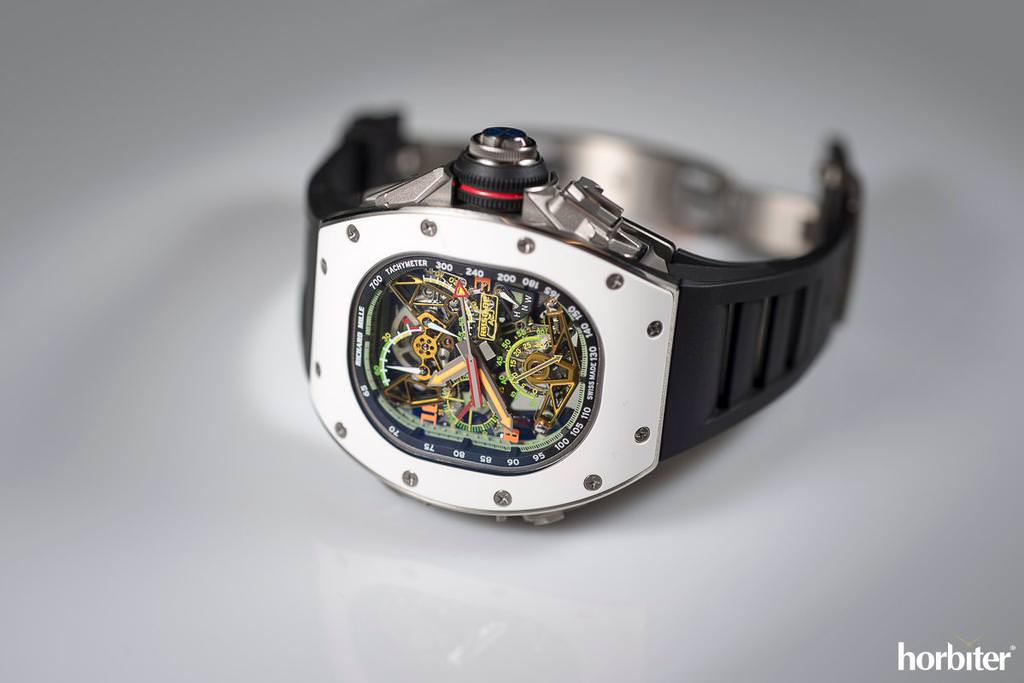 Richard Mille recently brought in-house the crafting of the ceramic parts of the case too – in the past this crafting process used to be entrusted to an external supplier, whereas nowadays it is performed in the Pro Art laboratories that manufacture even the smallest parts that make up a movement, replacing, due to size needs, the CNC machines for EDM machining processes.
Richard Mille recently brought in-house the crafting of the ceramic parts of the case too – in the past this crafting process used to be entrusted to an external supplier, whereas nowadays it is performed in the Pro Art laboratories that manufacture even the smallest parts that make up a movement, replacing, due to size needs, the CNC machines for EDM machining processes.
The lucky encounter with NTPT (North Thin Ply Technology)
Do you know how Richard Mille started using the North Thin Ply Technology composites? Years ago Richard got in touch with one of the managers of the NTPT® materials division – the company used to supply this composite to the America's Cup Alinghi team. The manager asked – "Why don’t you try and use this technology on your watches? It would be an interesting experiment!"
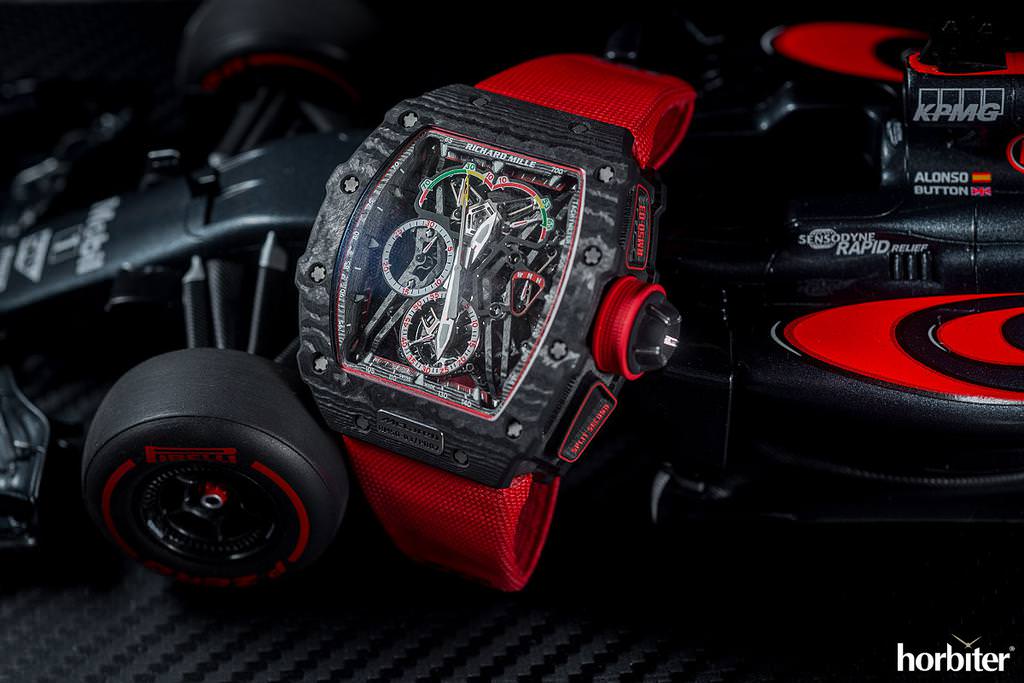 During the crafting of the first prototypes Richard Mille and Domique Guenat (the director of Valgine and the last heir of the founding family of the Valgine manufacturing company) were so happy with the result obtained that they immediately decided to adopt this new technology. However, to apply this same process for the crafting of the NTPT® case watches too, the technique had to be replicated and industrially developed.
During the crafting of the first prototypes Richard Mille and Domique Guenat (the director of Valgine and the last heir of the founding family of the Valgine manufacturing company) were so happy with the result obtained that they immediately decided to adopt this new technology. However, to apply this same process for the crafting of the NTPT® case watches too, the technique had to be replicated and industrially developed.
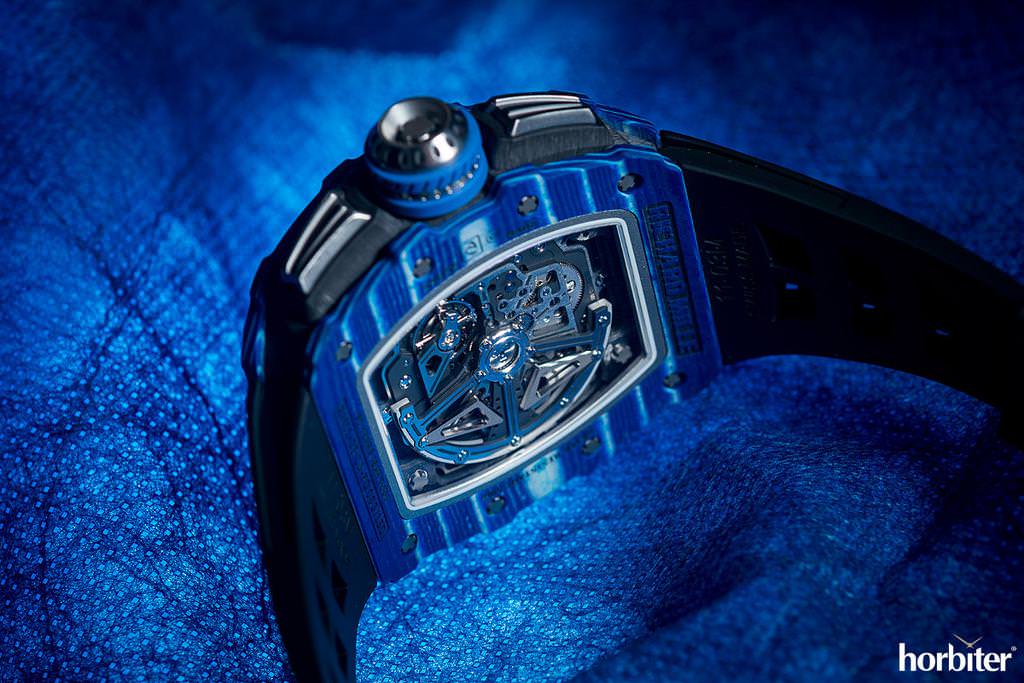 In this process very thin sheets of NTPT® carbon fiber (between 600 and 800 sheets in total) soaked with epoxy resin (the "matrix" of a composite), are placed at 45° one on top of the other (thus guaranteeing a full resistance to any direction, rather than along the orientation of the fibers only). The sheets are then compressed for at least six hours, then heated at a temperature of 120° C and finally cut. The final result is a composite block that represents, among the composites, the equivalent of the first titanium case mold that is subsequently processed.
In this process very thin sheets of NTPT® carbon fiber (between 600 and 800 sheets in total) soaked with epoxy resin (the "matrix" of a composite), are placed at 45° one on top of the other (thus guaranteeing a full resistance to any direction, rather than along the orientation of the fibers only). The sheets are then compressed for at least six hours, then heated at a temperature of 120° C and finally cut. The final result is a composite block that represents, among the composites, the equivalent of the first titanium case mold that is subsequently processed.
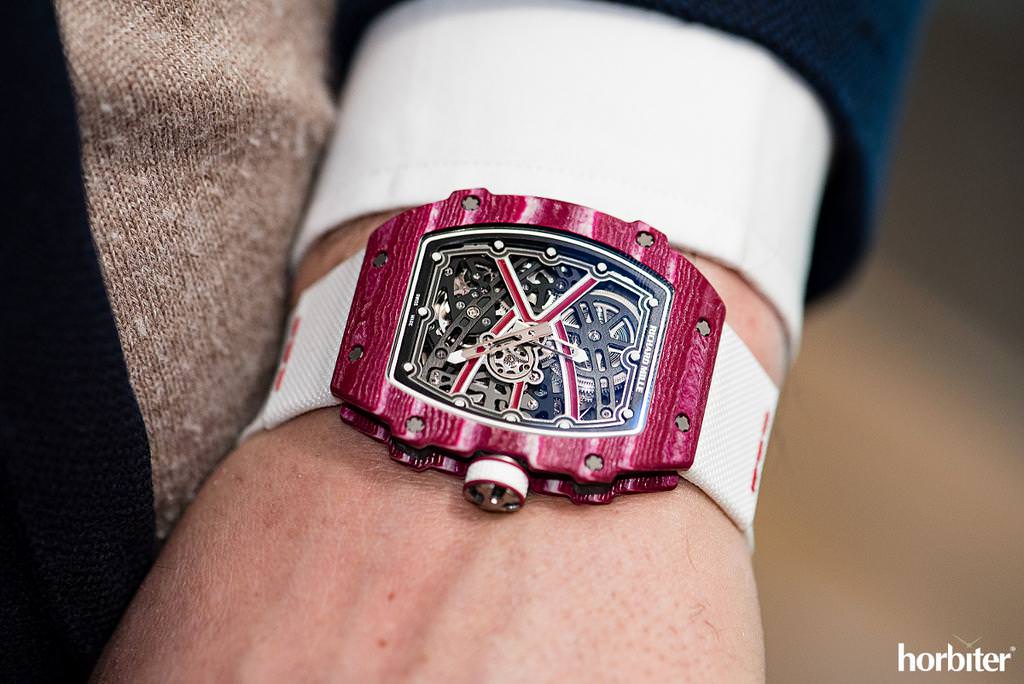 Thanks to the later adoption of the Quartz TPT® technology (that involves the addition of silicon to the composite) Richard Mille added colored pigments to the cases, thus making them extremely resistant to the UV rays and providing them with a different texture than that of any traditional carbon fiber composite. These cases are virtually indestructible.
Thanks to the later adoption of the Quartz TPT® technology (that involves the addition of silicon to the composite) Richard Mille added colored pigments to the cases, thus making them extremely resistant to the UV rays and providing them with a different texture than that of any traditional carbon fiber composite. These cases are virtually indestructible.
Functions rather than style define every aspect of a Richard Mille watch – how the RM 67-02 was born
The development of each new watch follows an original approach – the function, rather than the design, defines the product. In the Research and Development department a single project manager is assigned to each watch – it goes from the first computer drawn line to the production phase. Unlike what happens in a large and vertical industrial company (the automotive industry for example) there is no PMO office (Project Management Office) that supervises the Project Managers, but each project manager reports directly to Richard Mille and Dominique Guenat in a short responsibility line that guarantees a rapid decision-making process and nurtures the responsibility taking skills of every single Project Manager.
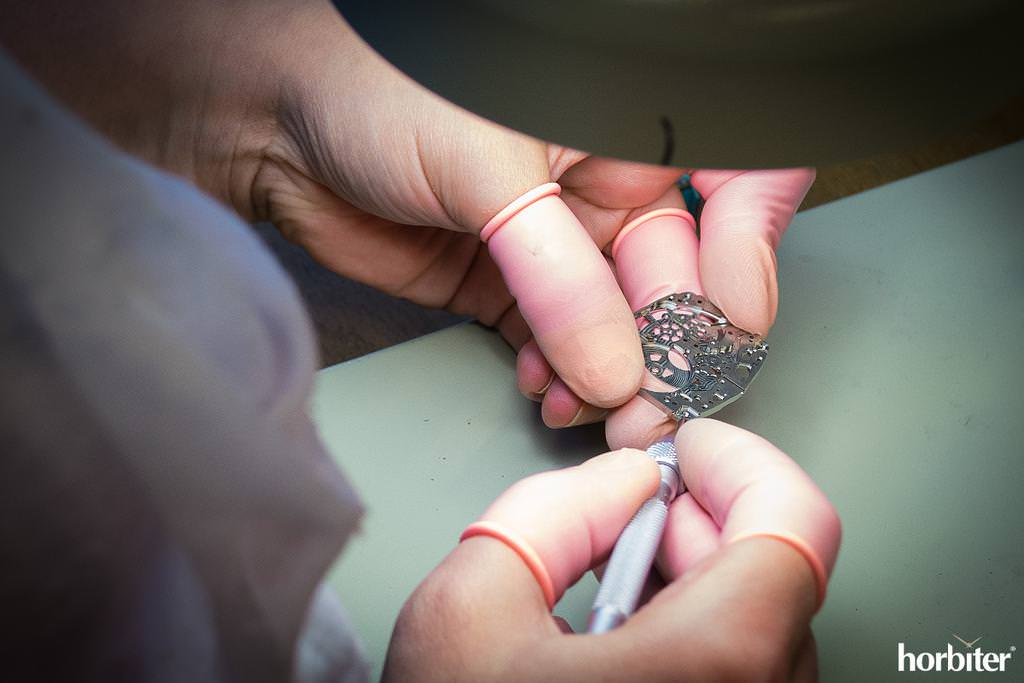 The same happened with the RM 67–02 Project Manager, whom we met and whose requirement was to guarantee that the new collection would offer a tangible improvement over the 67–01 version. The RM 67–02 was supposed to be sportier than the RM 67–01 and thinner too (the function selector and the date module were removed from the caliber), and it was also supposed be exclusively crafted in Carbon® or Quartz TPT®.
The same happened with the RM 67–02 Project Manager, whom we met and whose requirement was to guarantee that the new collection would offer a tangible improvement over the 67–01 version. The RM 67–02 was supposed to be sportier than the RM 67–01 and thinner too (the function selector and the date module were removed from the caliber), and it was also supposed be exclusively crafted in Carbon® or Quartz TPT®.
How long does it take to craft a Tourbillon? Six weeks, plus 3 weeks to assess the working precision. It then gets disassembled!
Tourbillons are so different from each other – even within the same manufactory – that making comparisons between two solutions could prove risky. The one described below is the process used by Richard Mille for the assembling and tuning phase of the calibres with a tourbillon; it takes six weeks to assemble the movement that will be then let run for the next three weeks. Once finely tuned, the master watch-maker disassembles the Tourbillon, then checks that every single part is in perfect condition, and that the whole set is free from dust or scratches, before finally proceeding to wash all of the components.
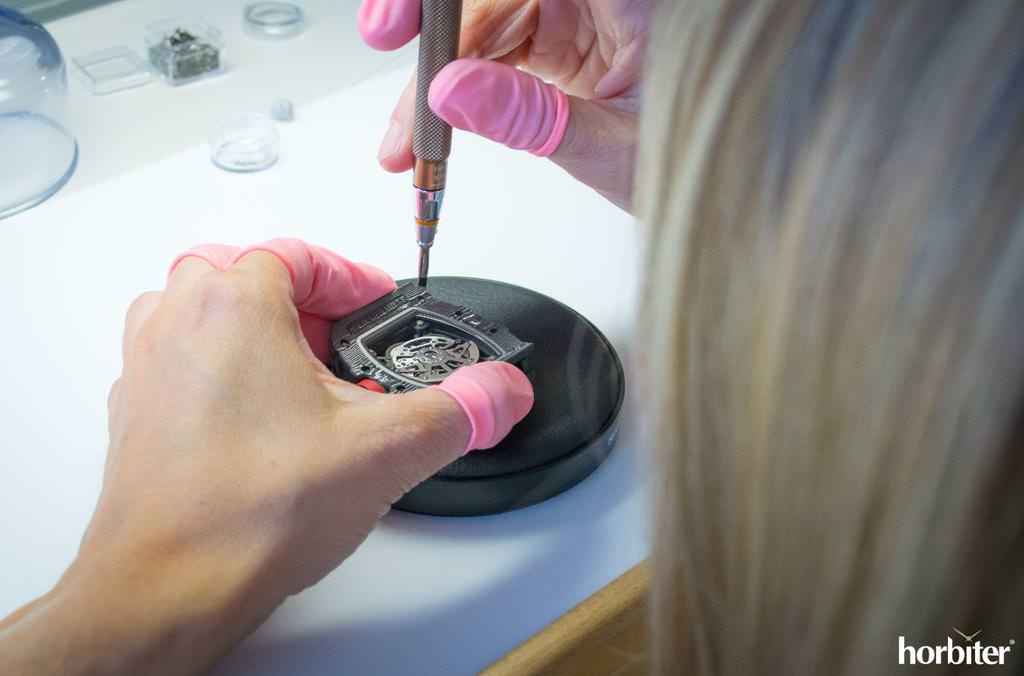 The same master watch-maker re-assembles the movement, then places it within the case, and let the watch run for two weeks, so as to completely fine tune the watch since the pressure and the temperature affecting the encased caliber are different from those affecting the caliber running on a test bench. If everything is working properly, a bracelet or a strap are attached to the case – a process that would last at least three months if nothing goes wrong! Both for the Project Managers and for the sports car industry the applying rule of thumb is the following: "One Man, One Engine", that is to say that each tourbillon gets its own single master watch-maker assigned to it.
The same master watch-maker re-assembles the movement, then places it within the case, and let the watch run for two weeks, so as to completely fine tune the watch since the pressure and the temperature affecting the encased caliber are different from those affecting the caliber running on a test bench. If everything is working properly, a bracelet or a strap are attached to the case – a process that would last at least three months if nothing goes wrong! Both for the Project Managers and for the sports car industry the applying rule of thumb is the following: "One Man, One Engine", that is to say that each tourbillon gets its own single master watch-maker assigned to it.
(Photo credit: Horbiter®'s proprietary photo-shooting, courtesy of Richard Mille)
Gaetano C @Horbiter®
Instagram – Gaetano Cimmino
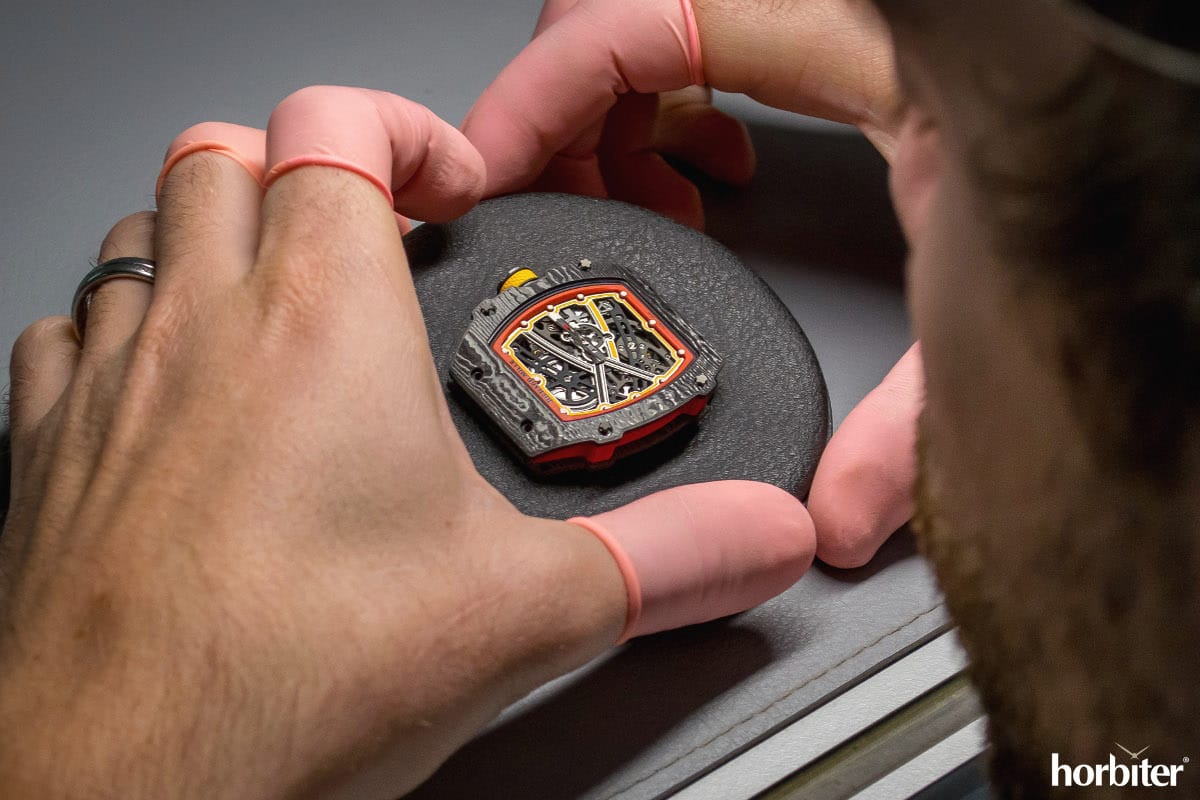
 Richard Mille is the only brand to guarantee a full performance; so a trip to the place where its watches are designed and crafted is essential to properly understand how this mission is achieved.
Richard Mille is the only brand to guarantee a full performance; so a trip to the place where its watches are designed and crafted is essential to properly understand how this mission is achieved. There are two industrial laboratories within the brand’s center located in Les Breuleux (1,520 inhabitants in the Jura Canton) where highly specialized staff follows all the designing, development and manufacturing activities – Valgine and Pro Art. Valgine was originally founded at the beginning of the 20th century by the Guenat family and is today completely integrated into Richard Mille for which it assembles movements.
There are two industrial laboratories within the brand’s center located in Les Breuleux (1,520 inhabitants in the Jura Canton) where highly specialized staff follows all the designing, development and manufacturing activities – Valgine and Pro Art. Valgine was originally founded at the beginning of the 20th century by the Guenat family and is today completely integrated into Richard Mille for which it assembles movements. Pro Art was built five years ago to manufacture cases and bracelets, but these are not the only two laboratories of this brand. The technical structure of Richard Mille also involves Audemars Piguet Renaud and Papi that can boast a great expertise in the crafting of ultra-complicated calibers, and that also manufactures tourbillons and double chronographs exclusively for Richard Mille. Valgine has ancient origins – it crafted refined movements for pocket watches already at the beginning of last century, and it then turned to the crafting of wristwatches in the 20s and 30s to supply well-known brands like Longines for example.
Pro Art was built five years ago to manufacture cases and bracelets, but these are not the only two laboratories of this brand. The technical structure of Richard Mille also involves Audemars Piguet Renaud and Papi that can boast a great expertise in the crafting of ultra-complicated calibers, and that also manufactures tourbillons and double chronographs exclusively for Richard Mille. Valgine has ancient origins – it crafted refined movements for pocket watches already at the beginning of last century, and it then turned to the crafting of wristwatches in the 20s and 30s to supply well-known brands like Longines for example. Pro Art is the company designed to build cases and bracelets, like the titanium
Pro Art is the company designed to build cases and bracelets, like the titanium  This is a characteristic that confirms the family nature of this company and the strong link between the territory and its people that is one of the cornerstones of the brand's success. Beyond pure and uninteresting figures that include microns and other technical details I think it is more important to emphasize that a Richard Mille watch is not a
This is a characteristic that confirms the family nature of this company and the strong link between the territory and its people that is one of the cornerstones of the brand's success. Beyond pure and uninteresting figures that include microns and other technical details I think it is more important to emphasize that a Richard Mille watch is not a  Moreover, if you look at the complexity of an RM
Moreover, if you look at the complexity of an RM  Richard Mille recently brought in-house the crafting of the
Richard Mille recently brought in-house the crafting of the  During the crafting of the first prototypes Richard Mille and Domique Guenat (the director of Valgine and the last heir of the founding family of the Valgine manufacturing company) were so happy with the result obtained that they immediately decided to adopt this new technology. However, to apply this same process for the crafting of the NTPT®
During the crafting of the first prototypes Richard Mille and Domique Guenat (the director of Valgine and the last heir of the founding family of the Valgine manufacturing company) were so happy with the result obtained that they immediately decided to adopt this new technology. However, to apply this same process for the crafting of the NTPT®  In this process very thin sheets of NTPT® carbon fiber (between 600 and 800 sheets in total) soaked with epoxy resin (the "matrix" of a composite), are placed at 45° one on top of the other (thus guaranteeing a full resistance to any direction, rather than along the orientation of the fibers only). The sheets are then compressed for at least six hours, then heated at a temperature of 120° C and finally cut. The final result is a composite block that represents, among the composites, the equivalent of the first titanium
In this process very thin sheets of NTPT® carbon fiber (between 600 and 800 sheets in total) soaked with epoxy resin (the "matrix" of a composite), are placed at 45° one on top of the other (thus guaranteeing a full resistance to any direction, rather than along the orientation of the fibers only). The sheets are then compressed for at least six hours, then heated at a temperature of 120° C and finally cut. The final result is a composite block that represents, among the composites, the equivalent of the first titanium  Thanks to the later adoption of the Quartz TPT® technology (that involves the addition of silicon to the composite) Richard Mille added colored pigments to the cases, thus making them extremely resistant to the UV rays and providing them with a different texture than that of any traditional carbon fiber composite. These cases are virtually indestructible.
Thanks to the later adoption of the Quartz TPT® technology (that involves the addition of silicon to the composite) Richard Mille added colored pigments to the cases, thus making them extremely resistant to the UV rays and providing them with a different texture than that of any traditional carbon fiber composite. These cases are virtually indestructible.  The same happened with the RM 67–02 Project Manager, whom we met and whose requirement was to guarantee that the new collection would offer a tangible improvement over the 67–01 version. The RM 67–02 was supposed to be sportier than the RM 67–01 and thinner too (the function selector and the
The same happened with the RM 67–02 Project Manager, whom we met and whose requirement was to guarantee that the new collection would offer a tangible improvement over the 67–01 version. The RM 67–02 was supposed to be sportier than the RM 67–01 and thinner too (the function selector and the  The same master watch-maker re-assembles the movement, then places it within the
The same master watch-maker re-assembles the movement, then places it within the 